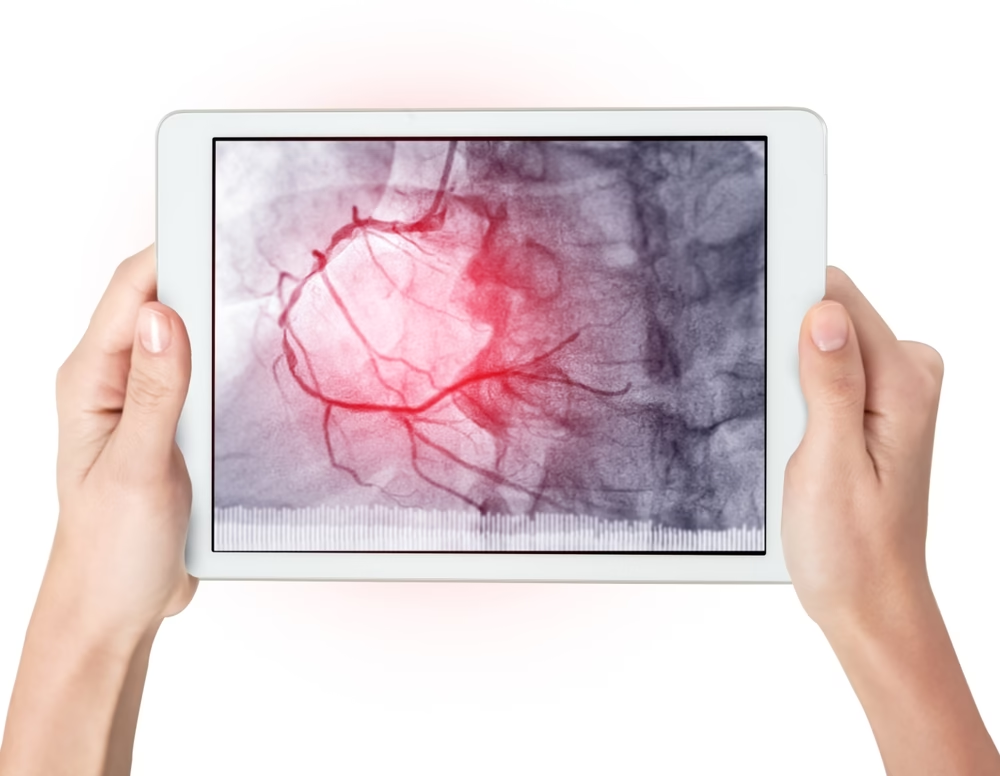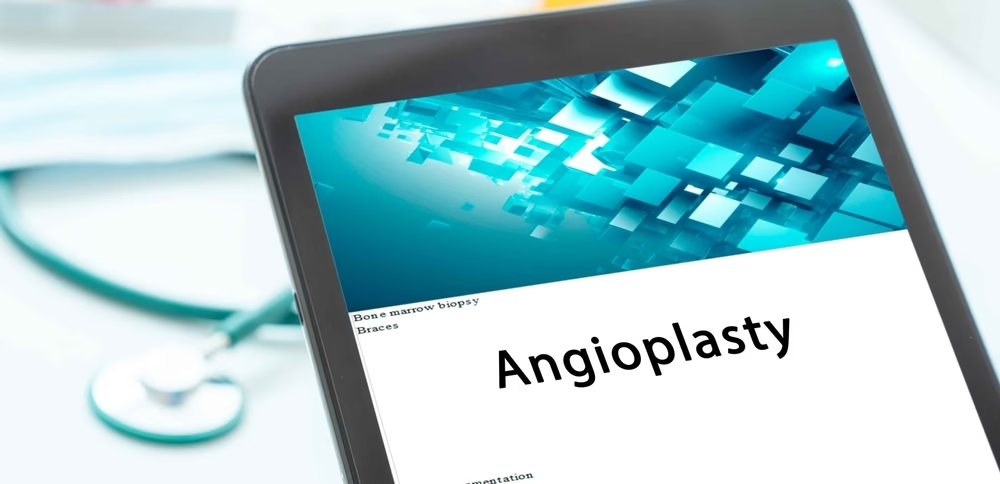SAAOL Heartcare Delhi has been providing non-surgical heart blockage treatment for 30+ years now, and after successfully treating 6 lakh+ patients, most of whom were suffering from even 90-100% stable heart blockages, we still dread to hear from our patients that they had been advised angioplasty or bypass surgery. Now, let us make it clear that after completely examining their heart reports and every related lifestyle aspect, the majority of these patients didn’t need any kind of surgical procedure, whether angioplasty or bypass surgery. These patients successfully avoided bypass surgery through non-surgical EECP treatment and committed lifestyle modifications.
The sentence “Sir, aapko 70% blockage hai. Jaldi se angioplasty kara lo.” hits harder than a heart attack. And that feeling while you are sitting outside in a hospital corridor, with an estimate of ₹5-6 lakhs in your hand, that confusion…wondering if it’s okay to continue to do so. Dr. Bimal Chhajer has been proving for decades that heart blockage is not always an indication for a stent. Our patients reverse heart disease without surgery or stents with non-surgical heart blockage treatment in India, like EECP treatment in Delhi/NCR, zero-oil nutrition, and advanced lifestyle modification.
So before you run to the cath lab, hold on… the science is evolving. We’ll dissect the truth with the most up-to-date global guidelines, real Indian patient cases, and the options that most cardiologists won’t even tell you about.
Let’s begin.
What Does 70% Heart Blockage Mean?
“70% blockage” is a term to describe 70% stenosis of one or more coronary arteries, typically from atherosclerotic plaque. But the thing is that this doesn’t always equate to reduced blood flow.
Is 70% Heart Blockage an Emergency
If you’re sitting or walking slowly, your heart might not need more flow than the partially open artery can provide. Your body may have collateral circulation, small backup vessels that reroute blood. Perhaps your 70% blockage is stable, is non-calcified, or has not ruptured; it hasn’t yet had an immediate impact on your health.
The bottom line is that the percentage by itself doesn’t determine the emergency. Symptoms do. You might have 90% heart blockage and be stable … or 40% that’s ready for rupture.
How Are Blockages Measured For Heart Blockage Treatment?
Most patients find out the location of their blockage after they’ve already had an angiogram to diagnose it … but what they aren’t told is that:
- Visual estimation on angiography is subjective. Two doctors can give two different percentages.
- Newer tests, such as FFR (Fractional Flow Reserve) and iFR (Instantaneous Wave-free Ratio), actually measure the degree of blood flow impairment, not just its appearance.
- Many “70%” heart blockages are not functionally significant.
A 2018 Lancet study made clear that stenting in stable angina patients made no difference in survival or heart attacks but did give people a placebo effect: short-term relief of symptoms that can also be brought on with medication or lifestyle changes.
When is Angioplasty Required for Heart Blockage Treatment?
Angioplasty is necessary:
- If you have a Heart Attack (STEMI or NSTEMI)
- If symptoms are severe and limiting your daily life, despite optimal meds
- If your EF (ejection fraction) is dangerously low due to ischemia
- If tests like FFR < 0.8 show actual blood flow limitation
Angioplasty is not necessary:
- If you have stable angina
- If your blockage is non-obstructive on stress tests
- If you’re asymptomatic (no chest pain, breathlessness)
- If you haven’t tried non-invasive therapy yet (like EECP)

The COURAGE trial and ISCHEMIA trial both found no difference in death, heart attack, or survival between patients who underwent angioplasty vs. those on optimal medical + lifestyle therapy.
What Are the Latest Guidelines on Stents & Heart Blockage Treatment?
European Society of Cardiology (ESC) 2023:
“For stable coronary artery disease, angioplasty offers no added benefit over optimal medical therapy unless there is significant ischemia.”
American College of Cardiology 2023:
“In non-emergency cases, medical therapy including diet, exercise, statins, and EECP is the first-line treatment.”
Indian Heart Journal (IHJ) 2022:
“EECP is an effective non-invasive alternative for chronic stable angina patients unfit or unwilling for angioplasty.”
What Is EECP and How SAAOL Uses It for Heart Blockage Treatment?
EECP (Enhanced External Counter Pulsation) is a US FDA-approved treatment that improves blood flow by stimulating natural bypasses in the heart, without surgery, without stents, without hospitalization.
Here’s how EECP works at SAAOL Heartcare Delhi:
- You lie down on a bed
- Special cuffs compress your legs rhythmically in sync with your heartbeat.
- Over 40 sessions, this creates new blood vessels and improves ejection fraction.
Clinical studies show EECP:
- Reduces angina by >80%
- Increases exercise capacity
- Reverses endothelial dysfunction (root cause of plaque)
SAAOL has treated over 6 lakh patients through EECP — many of them had blockages over 70%, but never needed surgery.
What Happens If You Ignore a 70% Heart Blockage?
Ignoring a heart blockage blindly is dangerous. But so is jumping into angioplasty without checking your symptoms, stability, and options.
If left unmanaged:
- A vulnerable plaque can rupture and form a clot
- A poor lifestyle can make a 70% become 95% in 6 months
- Blockages can progress silently in other arteries
But if managed properly:
- Blockages can shrink
- Inflammation and LDL can be reduced
- You can reverse the disease and avoid bypass surgery
How SAAOL’s Zero-Oil Diet & Lifestyle Helps in Reversing Heart Disease without Surgery
Stents don’t prevent future blockages. Lifestyle does. SAAOL’s treatment is based on 4 pillars:
- EECP therapy – Natural bypass creation and blood flow improvement through inflation and deflation of cuffs in sync with heartbeat.
- Zero-Oil Cooking, Diet – Total elimination of inflammatory fats
- Detox & Stress Reversal – SAAOL Detox Therapy, Yoga, meditation, stress management
- Medical Supervision – Regular tests and EF monitoring
Conclusion
A heart blockage is not a verdict. It’s a diagnosis that needs context, clarity, and calm, not a sales pitch for a cath lab.
At SAAOL Heartcare Delhi, we’ll sit with you.
We’ll explain your angiography.
We’ll design your lifestyle roadmap.
We’ll show you that healing the heart doesn’t require a knife.
Reverse heart disease without surgery.
Avoid unnecessary angioplasty.
Choose EECP. Choose clarity. Choose SAAOL Heartcare Delhi.
FAQs
Is a 70% heart blockage dangerous?
It can be, depending on your symptoms, stress test, EF, and plaque type. Not all 70% blockages are time bombs.
Can you live with a 70% blockage?
Yes, millions even reverse it. With diet, EECP, and lifestyle, you can lead a full, active life.
Will angioplasty cure my heart disease?
No. It only opens one spot. You can still have the disease elsewhere. Heart disease is systemic.
Can SAAOL Heartcare help me reverse a 70% blockage with non-invasive heart blockage treatment?
Yes. We help patients avoid bypass surgery, reduce heart blockages, improve EF, and take back control of their heart health.


